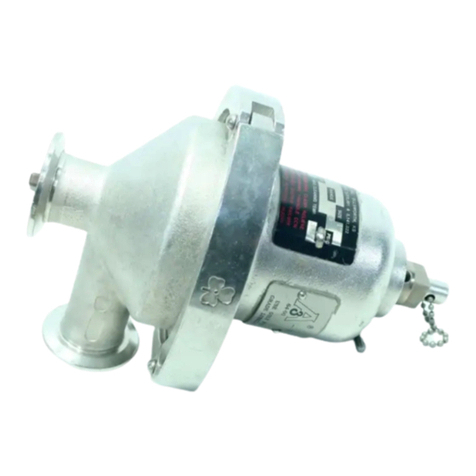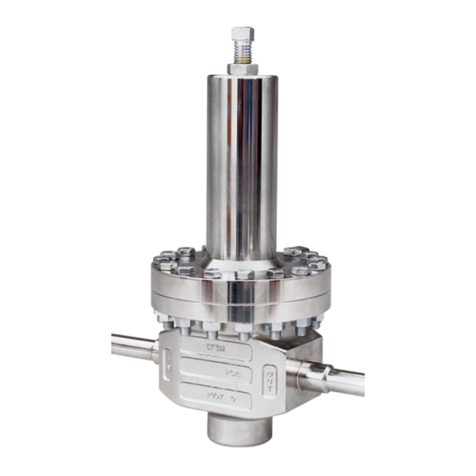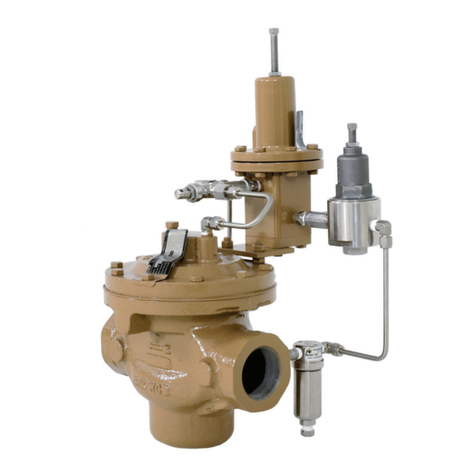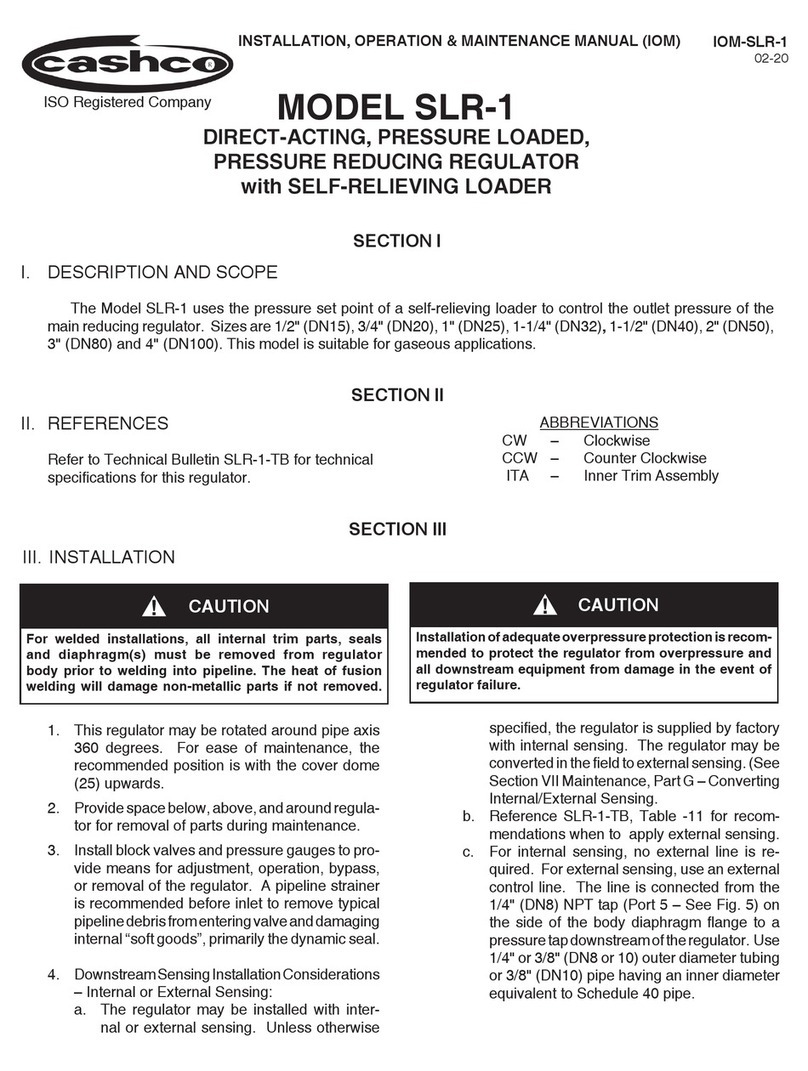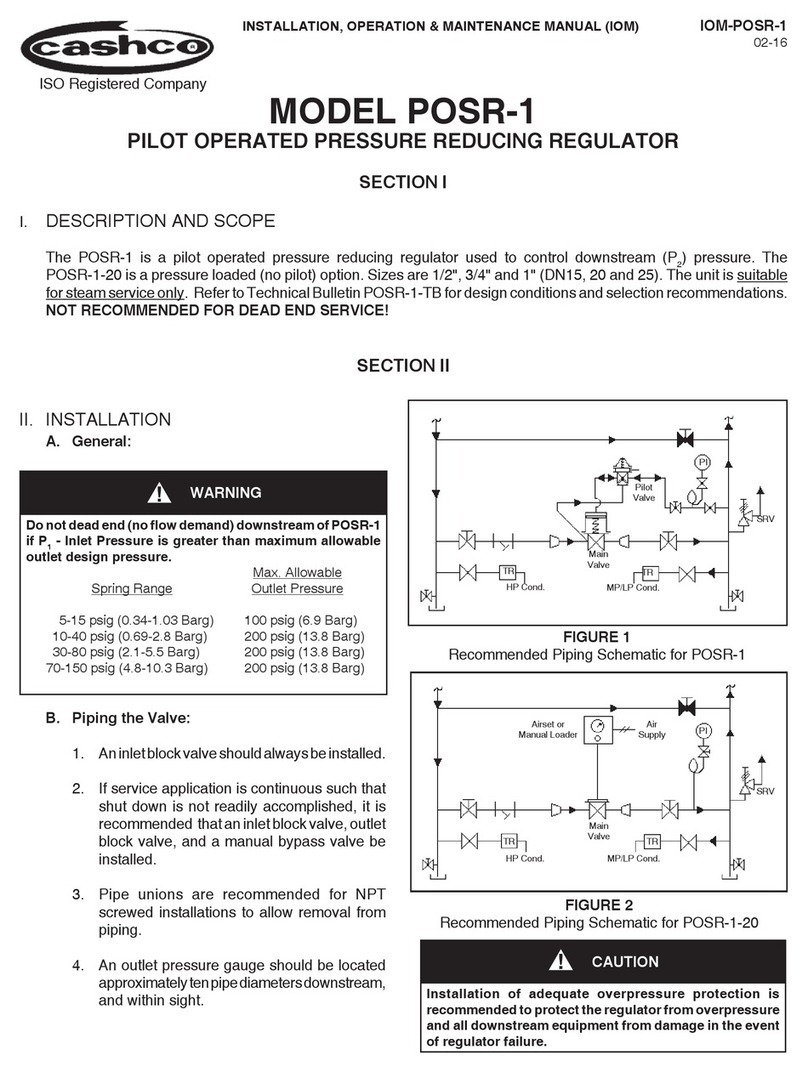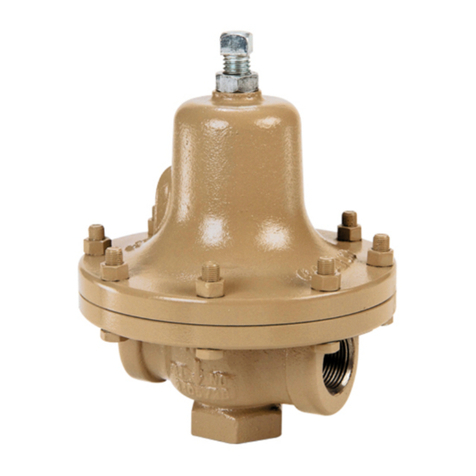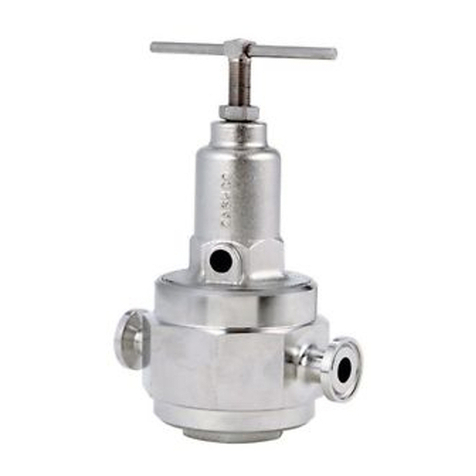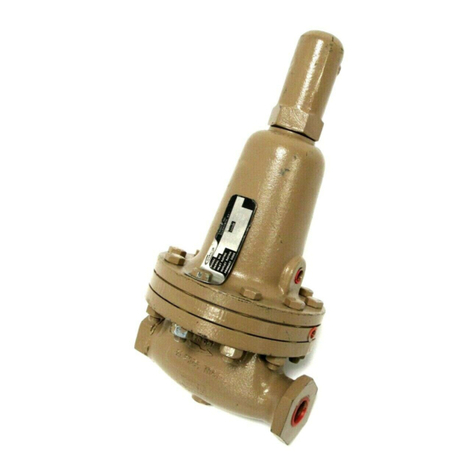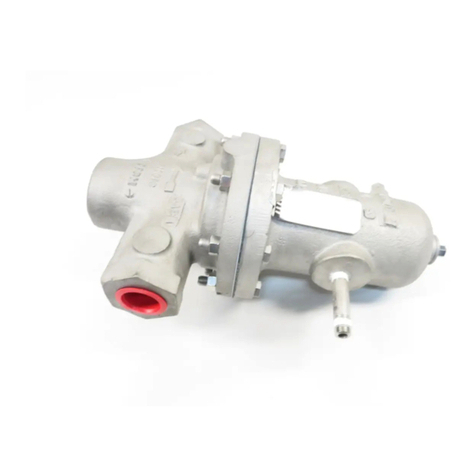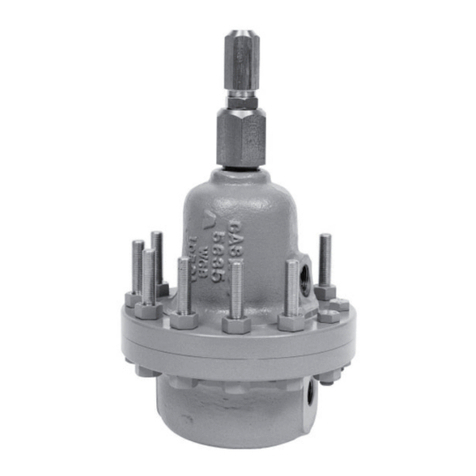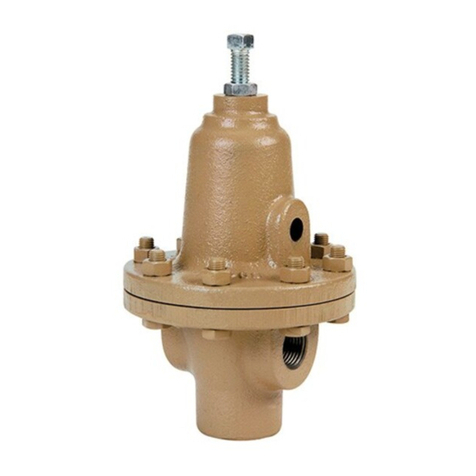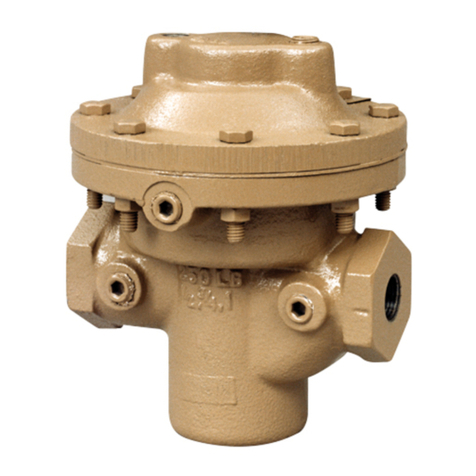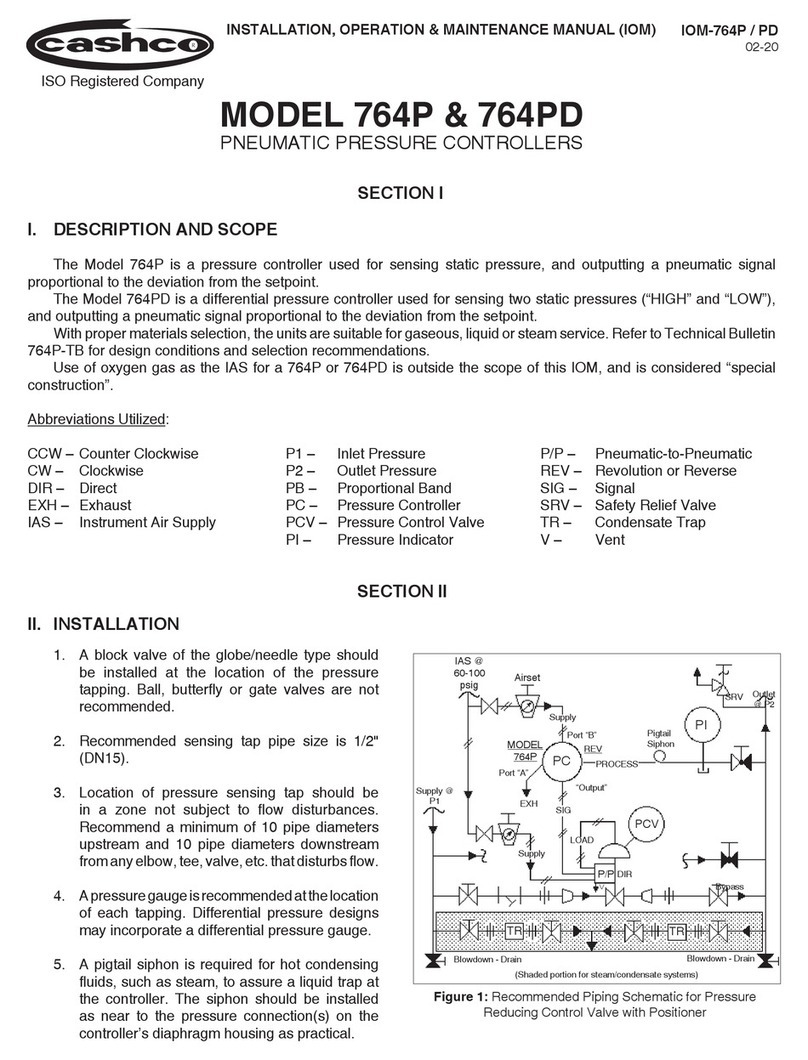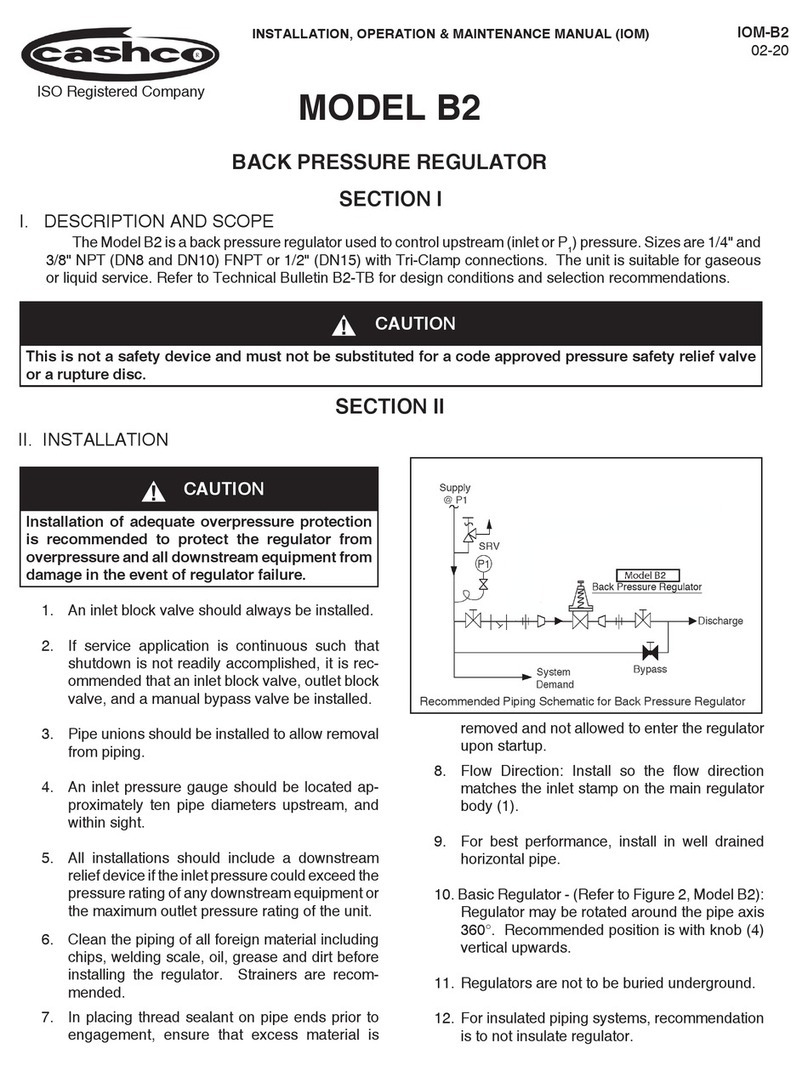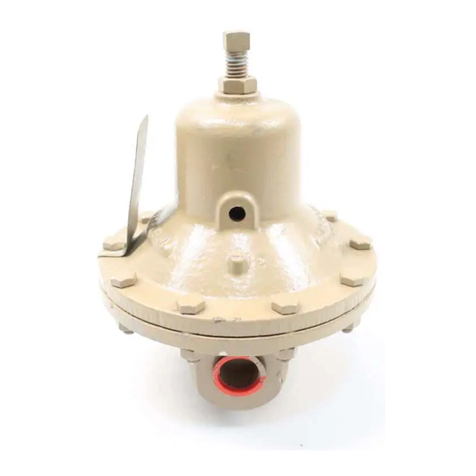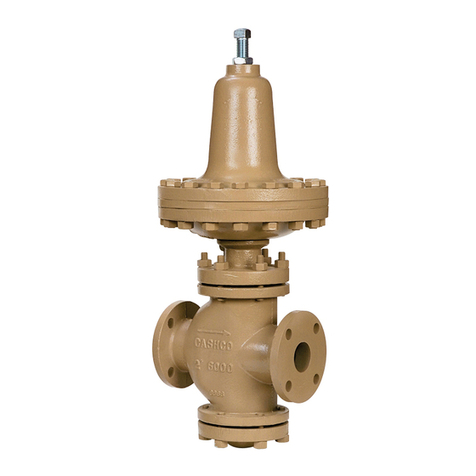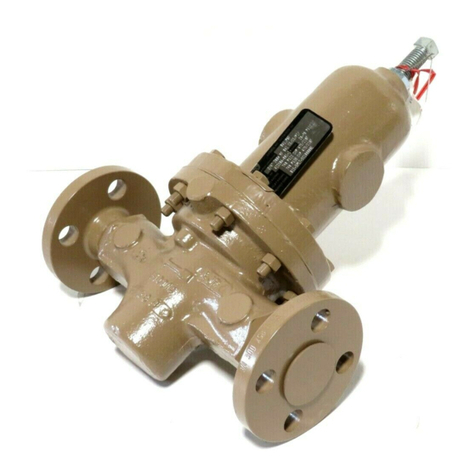
IOM-1465
3
2. Relax range spring (10) by turning adjusting
screw (12) CCW until removed from spring
chamber (2). NOTE: If the Option -2 or -22 is
utilized, the adjusting screw (12) and locknut
(13) are replaced with a knob (18) and locknut
(13). With the Option -2 +80 or -22 + 80, the
adjusting screw (12) and locknut (13) are
replaced with a handwheel subassembly (20)
and locknut (13).
3. Loosen spring chamber (2) by placing wrench
on “flats” and rotating CCW. DO NOT use the
flats on either side of the vent hole.
SECTION VI
A. General:
1. Maintenance procedures hereinafter are
based upon removal of the regulator from
the pipeline where installed.
2. Owner should refer to owner’s procedures for
removal, handling, cleaning and disposal of
non-reusable parts, i.e. O-rings, etc.
3. Refer to Figure 1 for the standard regulator
and its options.
B. Diaphragm Replacement:
1. Securely install the body (1) in a vise with the
spring chamber (2) directed upwards.
4. Remove spring chamber (2), spring button
(11), and range spring (10). NOTE: For
units with Option -80 (spring ranges 270-400
psig (18.6-27.6 Barg) and 360-500 psig (24.8
-34.5 Barg)) also remove the thrust bearing
(15), upper bearing washer (16), and lower
bearing washer (17). Inspect threads of spring
chamber (2) for cleanliness.
5. Remove pressure plate (9) and inspect
to ensure no deformation due to over-
pressurization. If deformed, replace.
6. Remove diaphragm(s) (8), O-ring (7) and
pusher plate (6). Inspect pusher plate (6)
to ensure no deformation due to over-
pressurization. If deformed, replace. Discard
O-ring (7) and diaphragm(s) (8).
7. Clean body (1) and body recess according
to owner's procedures. NOTE: On regulators
originally supplied as “oxygen clean”, Option
1465-55, maintenance must include a level
of cleanliness equal to Cashco’s cleaning
Standard #S-1134. Contact factory for details.
8. Install new O-ring (7) and diaphragm(s) (8).
NOTE: Refer to the quantity of diaphragm(s)
(8) incorporated in the bill of materials listing.
Depending on outlet pressure level, multiple
metal diaphragms may be “stacked”.
9. Visually center pressure plate (9) on
diaphragm(s) (8). Place the range spring (10)
on to the retainer hub of the pressure plate
(9).
10. Place multi-purpose, high temperature grease
into the depression of the spring button (11)
where adjusting screw (12) bears. Set spring
button (11) onto range spring (10); ensure
spring button (11) is laying flat. NOTE: For
units with Option -80 (spring ranges 270-400
psig (18.6-27.6 Barg) and 360-500 psig (24.8-
34.5 Barg) position spring button (11), thrust
V. SHUTDOWN
1. On systems with a bypass valve, and where system
pressure is to be maintained as the regulator is
shut down, slowly open the bypass valve while
closing the inlet (upstream) block valve. Fully
close the inlet (upstream) block valve. (When on
bypass, the system pressure must be constantly
observed and manually regulated. ) Close the
outlet (downstream) block valve.
SECTION V
2. If the regulator and system are to both be
shutdown, slowly close the inlet (upstream) block
valve. Close the outlet (downstream) valve only
if regulator removal is required.
CAUTION
Donotleaveabypassedregulatorunattended.
VI.MAINTENANCE
WARNING
SYSTEM UNDER PRESSURE. Prior to performing any
maintenance, isolate the regulator from the system
and relieve all pressure. Failure to do so could result
in personal injury.
WARNING
SPRING UNDER COMPRESSION. Prior to removing
spring chamber, relieve spring compression by
backing out the adjusting screw or handwheel. Failure
to do so may result in flying parts that could cause
personal injury.
